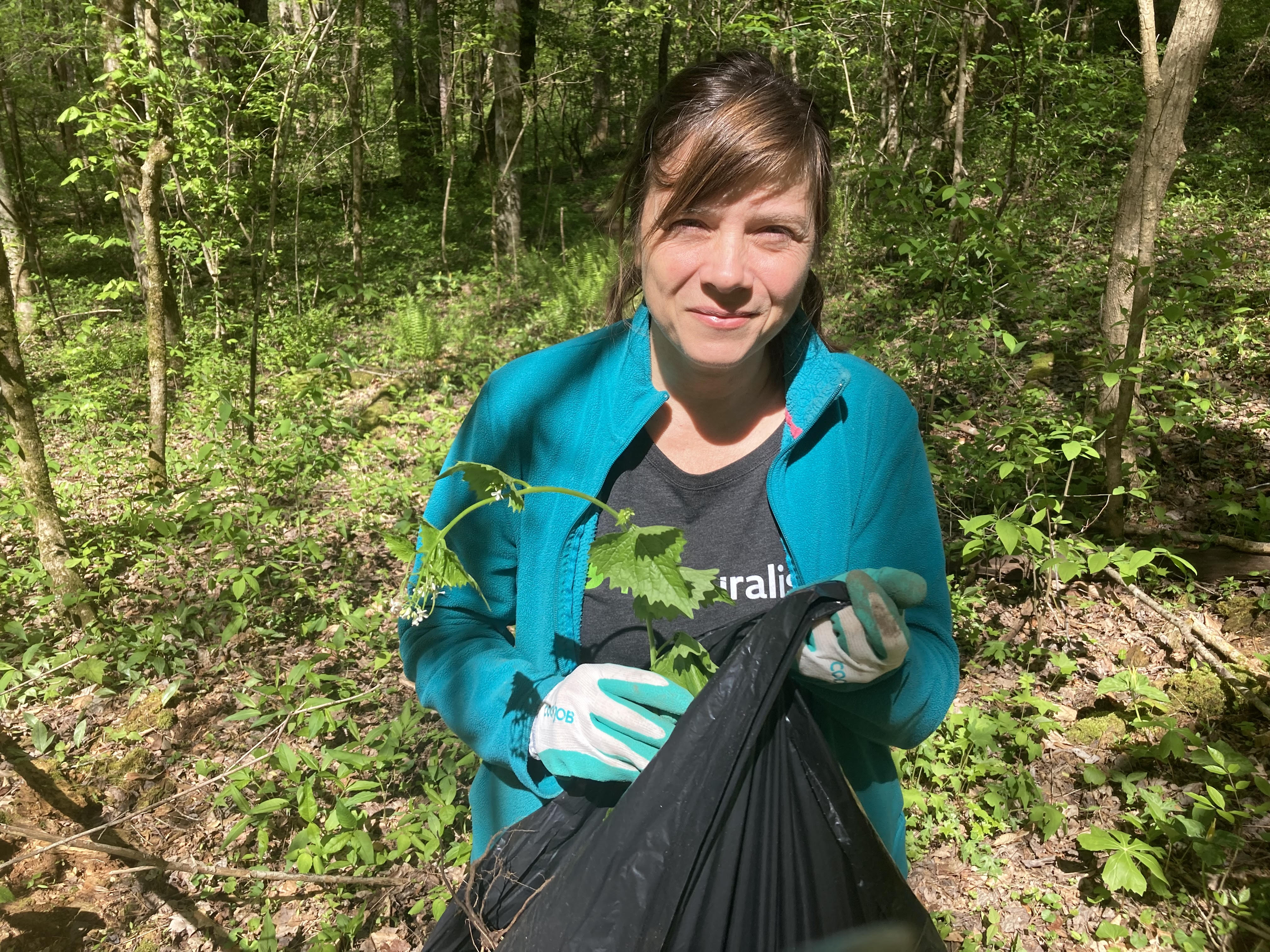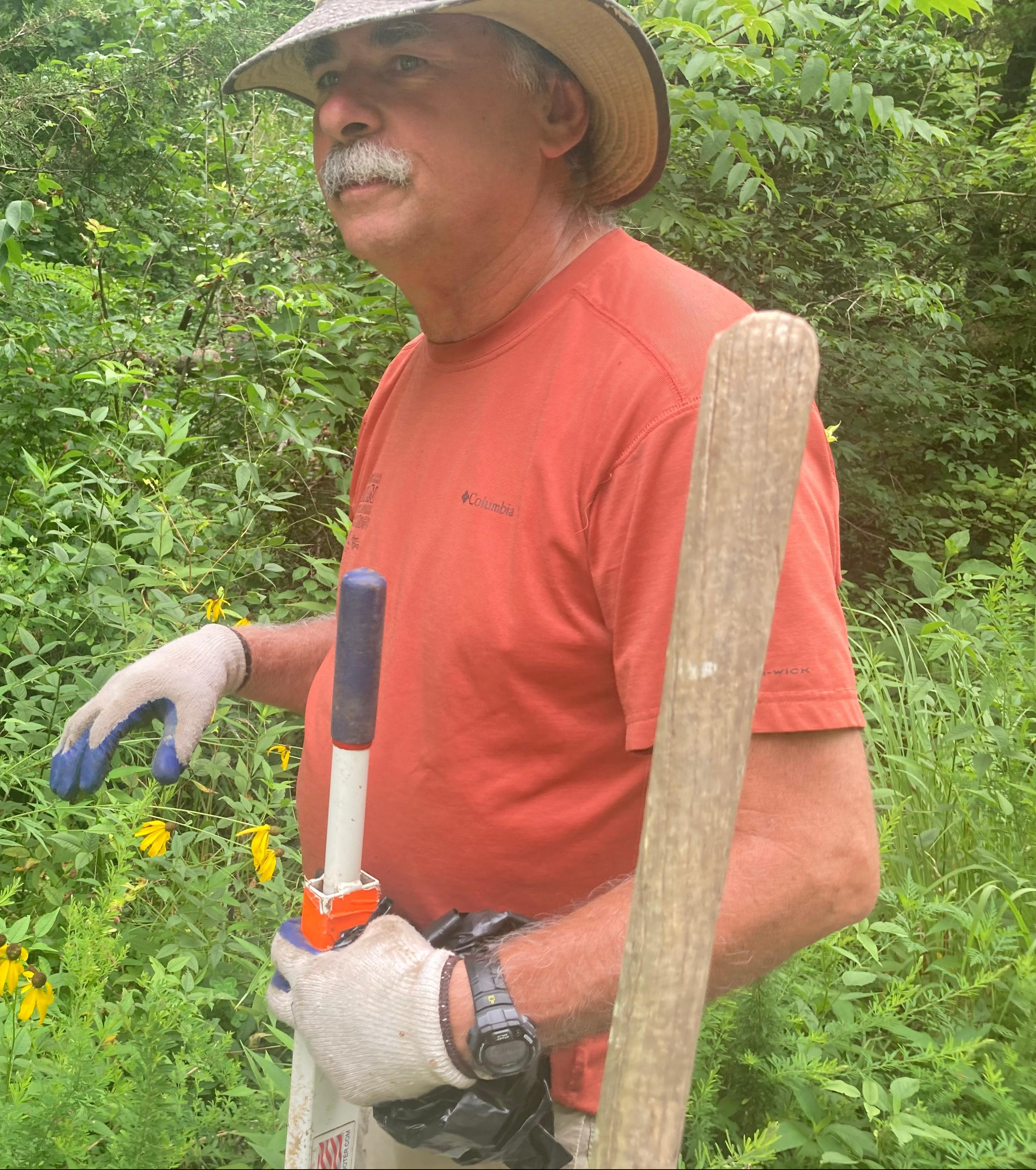Displaying items by tag: exotic species
To beat them, eat them: Enjoy a carp po’boy during an invasive-species panel
 Invasive carp jumping from the water at Barkley Dam in Kentucky. One option for eliminating carp is to eat them, and you can do just that on Saturday in Knoxville. Kentucky Department of Fish and Wildlife Resources
Invasive carp jumping from the water at Barkley Dam in Kentucky. One option for eliminating carp is to eat them, and you can do just that on Saturday in Knoxville. Kentucky Department of Fish and Wildlife Resources
Learn about invasive species such as carp and zebra mussels at Conservation Fisheries panel
KNOXVILLE —To hear Bo Baxter tell it, carp actually doesn’t taste half bad.
He fairly gorged on the bottom feeders once long ago, during a long Mississippi River trip with the famed aquatic biologist David Etnier.
He prefers silver carp to, say, bighead carp, but the meat is fairly light and flaky on both and “I consider it excellent,” Baxter said. (Baxter serves on the editorial board of Hellbender Press).
Regardless their culinary appeal, the fish don’t belong anywhere near here, and will be among several different invasive species set to be the subject of a forum beginning at 6 p.m. Saturday, Aug. 23 at Remedy Coffee, 800 Tyson St., Knoxville.
And while you learn, you can enjoy a $5 carp po’boy and hushpuppies plate courtesy of the Tennessee Wildlife Resources Agency (TWRA), which is working to both limit the spread and establish a robust commercial market for the fish. Payson will provide the bread and remoulade.

Resisting the alien invasion: Oak Ridge work party highlights threat of invasive plants
 Regina Santore with the Wild Ones Smoky Mountains Chapter puts garlic mustard into a bag during an April volunteer event along a greenway in Oak Ridge. Ben Pounds/Hellbender Press
Regina Santore with the Wild Ones Smoky Mountains Chapter puts garlic mustard into a bag during an April volunteer event along a greenway in Oak Ridge. Ben Pounds/Hellbender Press
Volunteers fight exotic and invasive garlic mustard on Oak Ridge greenway
OAK RIDGE — Plants from around the world are overrunning the Southeast’s wild places, causing problems for native flora and fauna.
It’s a problem that’s grabbed the attention and work of dedicated organizations. One of them, the Tennessee Invasive Plant Council has many strategies to solve this problem: volunteer weed-pulling events, guides to help gardeners find native plants from which to choose, and even legislation. Its vice president, Jamie Herold, has many thoughts on the issue. She was eager to share them over pizza after a morning of pulling one such invasive, garlic mustard, at an event in Oak Ridge organized by Tennessee Citizens for Wilderness Planning, and Greenways Oak Ridge.
The event involved pulling garlic mustard, a plant originally from Europe, from the edge of the woods behind apartments on West Vanderbilt Avenue. This area includes the Wildflower Greenway, a trail full of wildflowers that locals have been eager to protect from the garlic mustard’s domination.
- exotic invasive
- exotic species
- invasive plants
- invasive plant control
- invasive species
- oak ridge greenway
- garlic mustard
- tennessee invasive species
- tennessee invasive plant council
- jamie herold
- regina santore
- roger macklin
- wildflower greenway
- tennessee citizens for wilderness planning
- greenways oak ridge
- wild ones smoky mountains chapter
- biodiversity
Conjuring life at Worthington Cemetery
 Jimmy Groton, a Tennessee Citizens for Wilderness Planning board member, clears invasive plants at Worthington Cemetery in Oak Ridge during a volunteer work party in July. Ben Pounds/Hellbender Press
Jimmy Groton, a Tennessee Citizens for Wilderness Planning board member, clears invasive plants at Worthington Cemetery in Oak Ridge during a volunteer work party in July. Ben Pounds/Hellbender Press
Volunteers nurture life in an Oak Ridge cemetery
OAK RIDGE — The northern corner here is a small place teeming with treasures, including the Worthington Cemetery Ecological Study Area.
Elza Gate Park off Oak Ridge Turnpike, also known as Tennessee Highway 95, is the starting point for walking trails taking visitors through a cedar barren, a somewhat open habitat including eastern red cedars. The barrens include plants more similar to a prairie than many East Tennessee forests. The trail reaches a cemetery dating before the founding of Oak Ridge.
Woven together in this small area there is a natural mix of wildlife and historical preservation. Visitors to the loop trail will encounter a pine forest and a wetland area complete with a boardwalk to observe birds. Tennessee Valley Authority designated the land as both an Ecological Study Area and Small Wild Area.
- elza gate park
- oak ridge
- tennessee valley authority
- samuel worthington
- global ecology and conservation
- tennessee citizens for wilderness planning
- jimmy groton
- melton hill lake
- nature conservancy
- worthington cemetery ecological study area
- tva oak ridge
- twra
- red cedar barren
- tennessee prairie
- invasive plant control
- exotic species
- ann hewitt worthington
- citizen pest plant control
State’s fight against Asian carp scales up
WATE: Commercial fishing pulls out 10 million pounds of exotic carp from Tennessee River system
If you never thought there’d be an Asian carp commercial fishery in Tennessee waters, you were wrong.
Tennessee Wildlife Resources Agency’s Asian Carp Harvest Incentive Program has yielded 10 million pounds of the exotic fish since 2018, the bulk caught downstream on the Tennessee River system at Kentucky and Barkly reservoirs. The fish has been spotted as far upstream as Knox and Anderson counties.
The Tennessee Valley Authority and TWRA are experimenting with acoustic barriers to prevent further upstream spread of the fish, which compete with native fish for food and habitat.
“There are four types of Asian carp: bighead, silver, black and grass,” WATE reported. “Experts say the species threatens to disrupt aquatic ecosystems and starve out native species due to their ability to out-compete native species for food like plankton.”
So what do fishermen do with 10 million pounds of carp?
It can be sold to wholesalers for distribution abroad and also makes for really good fertilizer.
Marking points in time: The Hal DeSelm Papers

A life dedicated to the flora of Tennessee
Dr. Hal DeSelm clambered around the crest of Cherokee Bluff in the heat of a late Knoxville summer 22 years ago. The Tennessee River flowed languidly some 500 feet below. Beyond the river stood the campus of the University of Tennessee Agriculture Institute. The towers of the city center rose to the northeast beyond the bridges of the old frontier river town.
DeSelm was not interested in the views of the urban landscape below. He was interested in the native trees, shrubs, herbs and grasses that clung to the ancient cliffside with firm but ultimately ephemeral grips on the craggy soil.
The retired UT professor, a renowned ecologist and botanist who died in 2011, had been sampling the terrestrial flora of Tennessee for decades. The life-long project took on a new urgency in the early 1990s, when he accelerated his data collection in hopes of writing the authoritative guide to the natural vegetation native to the forests, barrens, bogs and prairies of pre-European Tennessee.
Between 1993 and 2002, DeSelm collected 4,184 data points from 3,657 plots across the state. Many of those plots have since been lost to development, highways, and agriculture, or overrun by exotic species, but he assembled an invaluable baseline of the native landscape. Many of the sites he recorded have since been lost to development.
- science
- botany
- botanist
- Tennessee River
- native plant
- native tree
- native herb
- native grass
- native shrub
- Tennessee
- University of Tennessee
- terrestrial flora
- barren
- cedar barren
- ecologist
- Hal DeSelm
- Cherokee Bluff
- University of Tennessee Agricultural Institute
- native landscape
- preEuropean Tennessee
- natural vegetation
- sampling plot
- 1993
- 2002
- exotic species
- invasive species
- Todd Crabtree
- Tennessee State Botanist
- Natural Heritage Program
- conservation
- understory
- canopy
- ground cover
- herbaceous growth
- geology
- bedrock
- soil type
- forest
- conservationist
- database
- collection
- baseline data